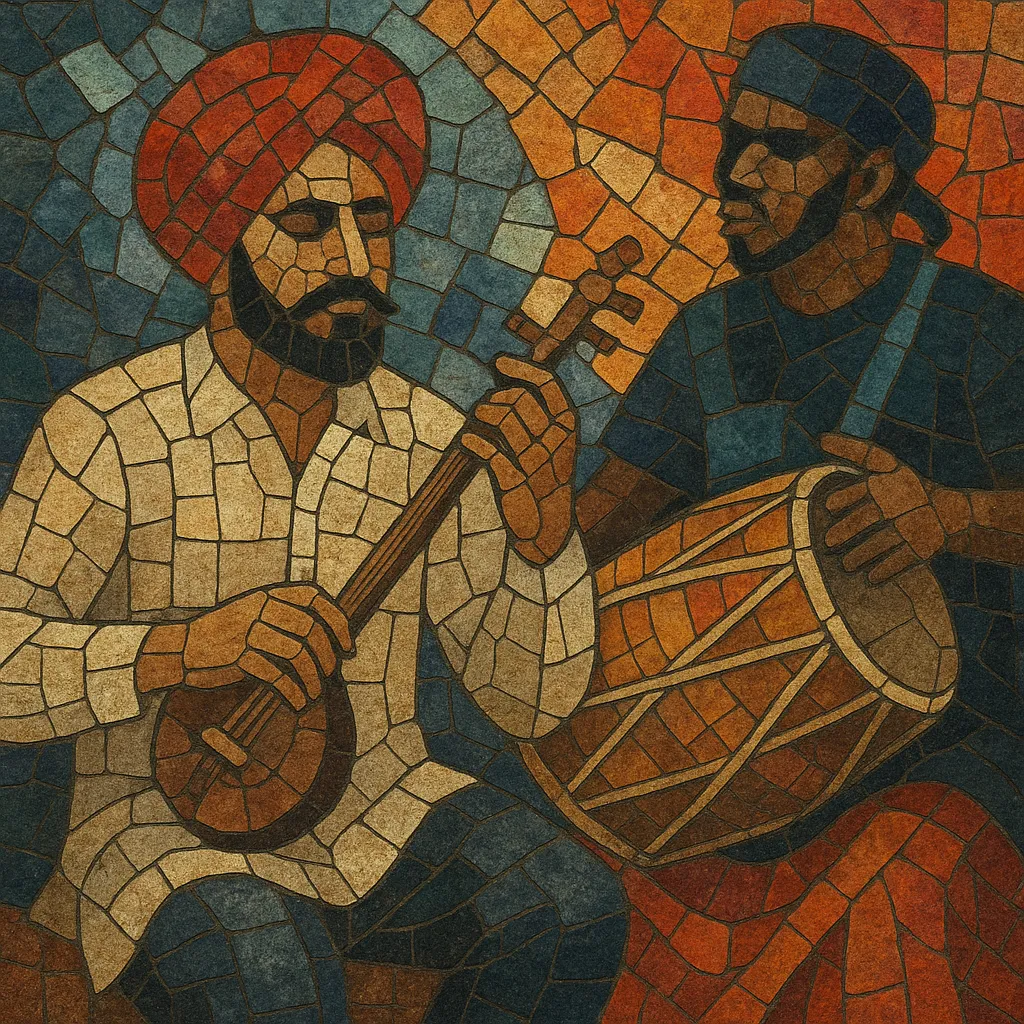Folkhop is a hybrid style that fuses Punjabi folk vocals and instruments with the beats, structures, and aesthetics of hip hop. It typically pairs tumbi riffs, dhol patterns, and call-and-response choruses with punchy 808 drums, sampled breaks, and rap verses.
Emerging from the UK Punjabi diaspora (with strong Canadian connections), folkhop translated the energy of bhangra dance floors into a hip-hop framework. The result is music that is both proudly rooted in Punjabi tradition and fluent in contemporary urban production, equally at home at weddings, clubs, and on mainstream radio.
Folkhop took shape in the early 2000s within the UK Punjabi diaspora, where second- and third‑generation producers and DJs were already modernizing bhangra with club‑ready sonics. Drawing on hip hop’s drum programming, sampling culture, and MC traditions, they embedded Punjabi folk vocals and dance rhythms in head‑nodding, bass‑forward beats. This synthesis offered a fresh way to present heritage music to younger audiences raised on rap and R&B.
Pioneering producers and acts popularized the formula by foregrounding dhol and tumbi alongside 808s and breakbeats, often featuring guest rappers or bilingual hooks. Compilation series and mixtapes circulated the sound through clubs, community radio, and South Asian media, while crossover singles introduced wider audiences to Punjabi folk timbres on hip‑hop arrangements.
In the 2010s, folkhop’s palette widened as trap drums, louder synths, and crisper digital production entered the style. UK and Canadian scenes continued to collaborate with artists across India and Pakistan, and Bollywood and mainstream pop adopted its sonic signatures. Streaming platforms helped the sound reach South Asian diasporas worldwide, where it remains a go‑to formula for dance‑floor‑oriented Punjabi releases.
Folkhop functions as a bridge between traditional Punjabi performance and global urban music. It preserves folk melodies, linguistic identity, and dance culture while enabling experimentation with contemporary rap flows, club mixing, and modern sound design.


